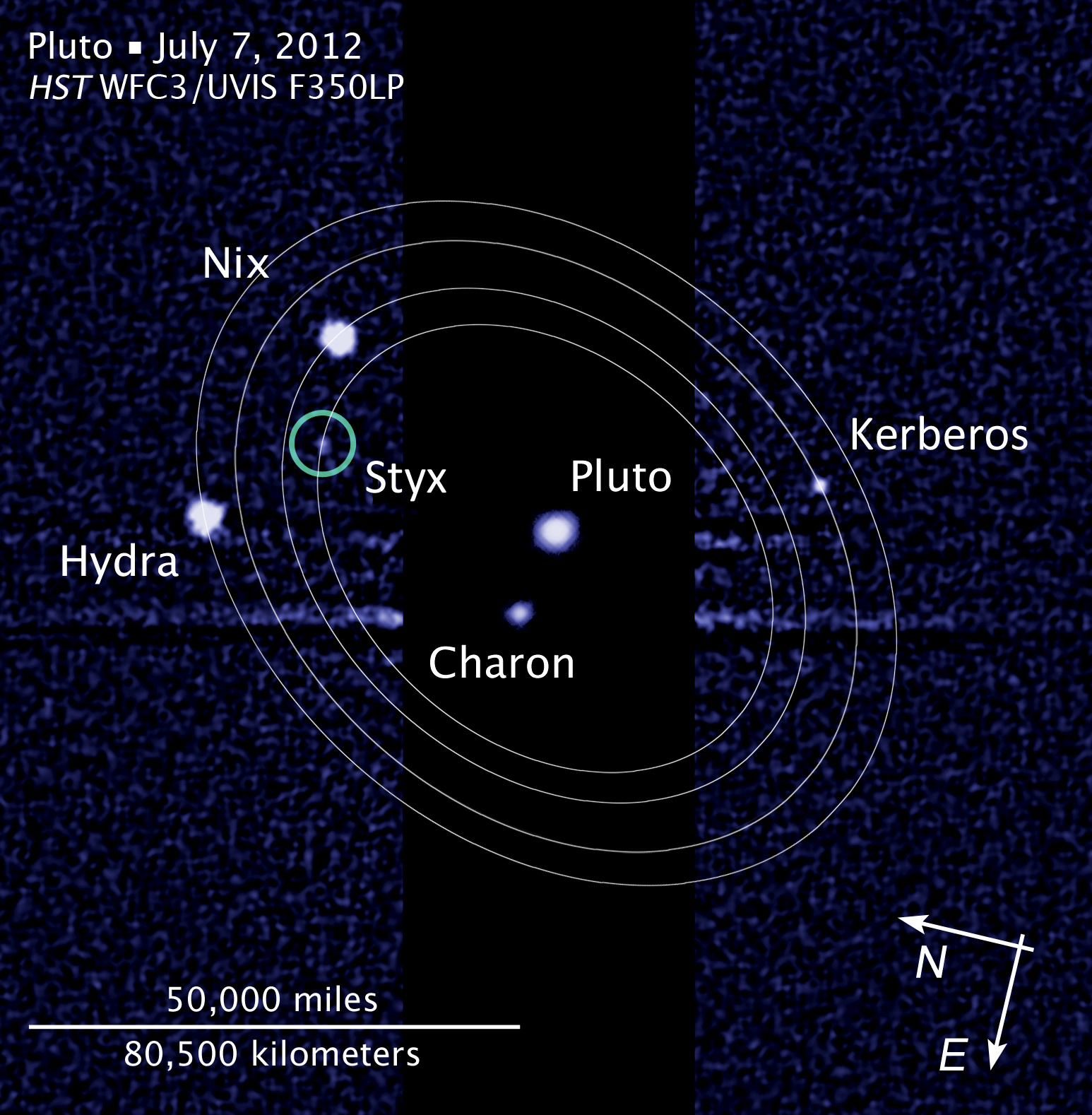
The "new" moon's names are Nix and Hydra, and they were discovered back in 2005. Their orbits are farther away than Charon's, giving them orbital periods of about 25 and 38 days respectively. These periods seem slow compared to Charon, which orbits pluto at the stunning speed of an orbit every 6.4 days.
So, what does a planet about 1/5th the mass of the moon need 3 moons for? Hold on, did I say 3? I meant FIVE. In the last two years, two more moons have been found orbiting Pluto. Tenatively called P4 and P5, these two moons are the 2nd and 4th closest moons to Pluto (see orbital diagram).
Enter New Horizons, an exploratory spacecraft launched in 2006. New Horizons is scheduled to arrive at Pluto in mid-July, 2015. There it will study Pluto and its moons before careening off into the Kuiper belt. But there's a bit of a problem. When New Horizons was launched, Pluto had only 3 discovered moons. Now, we know of 5 moons orbiting Pluto, and scientists are concerned that Pluto may have more hazards lurking around it in the form of rings or other dust clouds. Depending on what New Horizons' cameras reveal, it may get a last-minute course change. This potential course change won't keep the spacecraft from studying the system, but it will mean that we won't get any up-close shots of the planet or its moons.
No comments:
Post a Comment